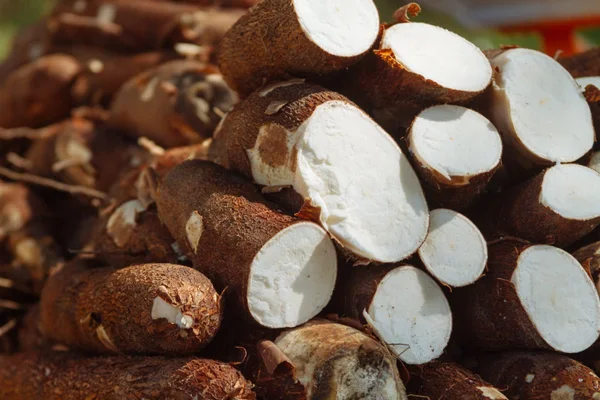Cassava, also known as tapioca, has prompted the ICAR-Central Tuber Crops Research Institute (CTCRI) to issue an advisory following a recent incident in Idukki where 13 cows died on a farm due to feeding animals cassava parts.
What is Tapioca?
- Tapioca is a starch extracted from the cassava root, originally from South America.
- It is a dietary staple in regions across Africa, Asia, and South America due to the cassava root’s ease of cultivation.
- Nutritionally, tapioca is predominantly starch, offering minimal nutritional value.
- Being gluten-free, it is a suitable wheat alternative for those on gluten-free diets.
- Commercially, tapioca is available as white flour, flakes, or pearls.
Risks in Animal Feeding:
- The ICAR-Central Tuber Crops Research Institute (CTCRI) issued an advisory regarding animal feeding with cassava (tapioca) components.
- All parts of cassava, including leaves, stem, tuber, and rind, contain cyanogenic glucosides (CNGs) like linamarin and lotaustralin, which can produce toxic compounds.
- Cassava leaves are notably higher in CNGs, which decrease as the leaves age.
- The rind has 10-30 times more cyanoglucoside content than edible parts.
- Immediate feeding of crushed peels/leaves or without proper drying risks cyanide poisoning in animals.
Safe Processing Methods for Animal Feed
- Non-bitter cassava tuber/roots are safe for animal consumption post-peeling, even in raw form.
- Cooking tuber pieces by gradually increasing water temperature (not boiling) reduces toxic content.
- Slow sun drying for 12-18 hours can eliminate 80-90% of cyanoglucosides in leaves.
- For cassava peels, crushing and allowing them to rest at room temperature for 5-6 hours followed by complete sun drying is effective in reducing cyanide levels.
Ref: Source
| UPSC IAS Preparation Resources | |
| Current Affairs Analysis | Topperspedia |
| GS Shots | Simply Explained |
| Daily Flash Cards | Daily Quiz |



